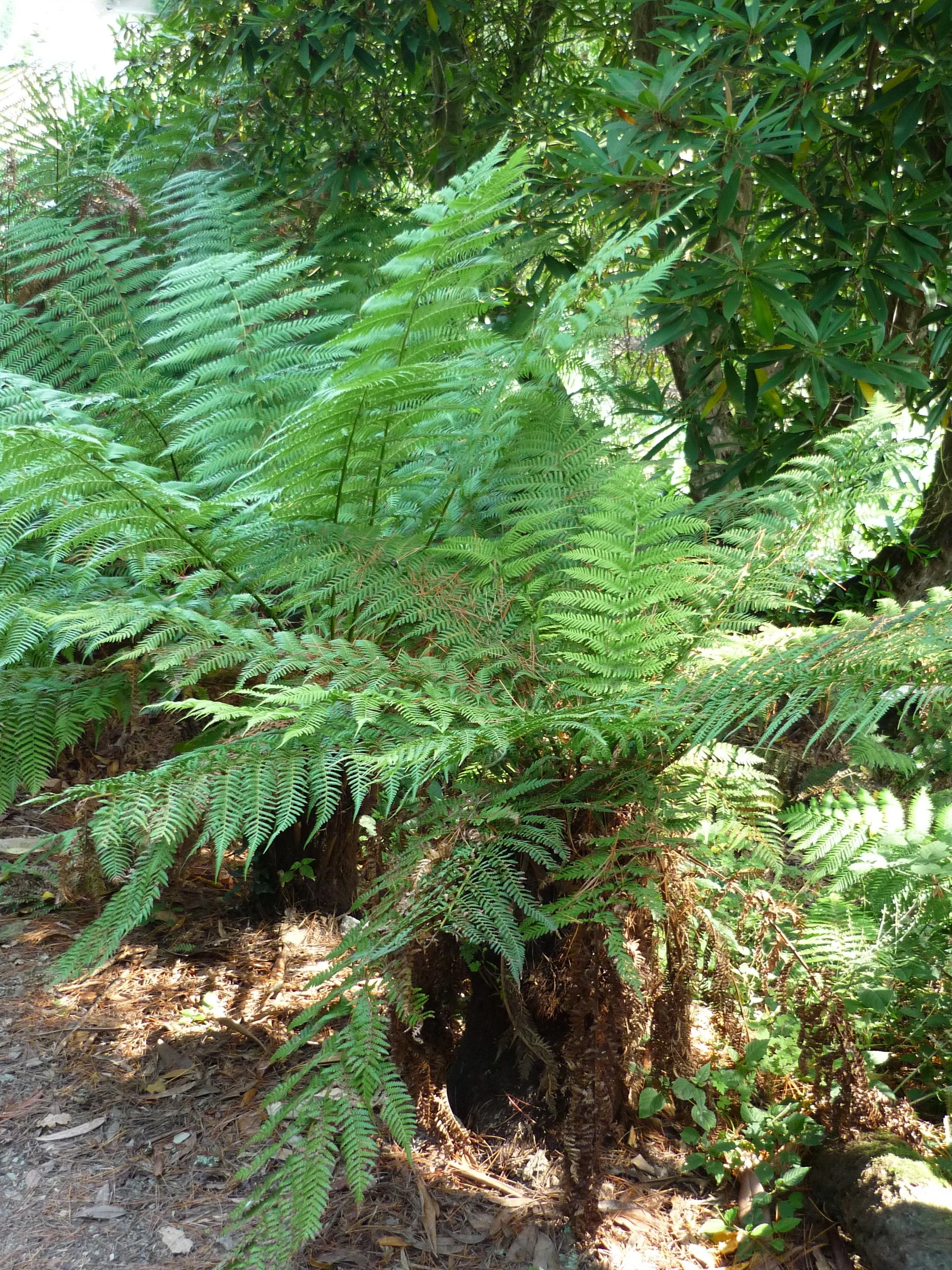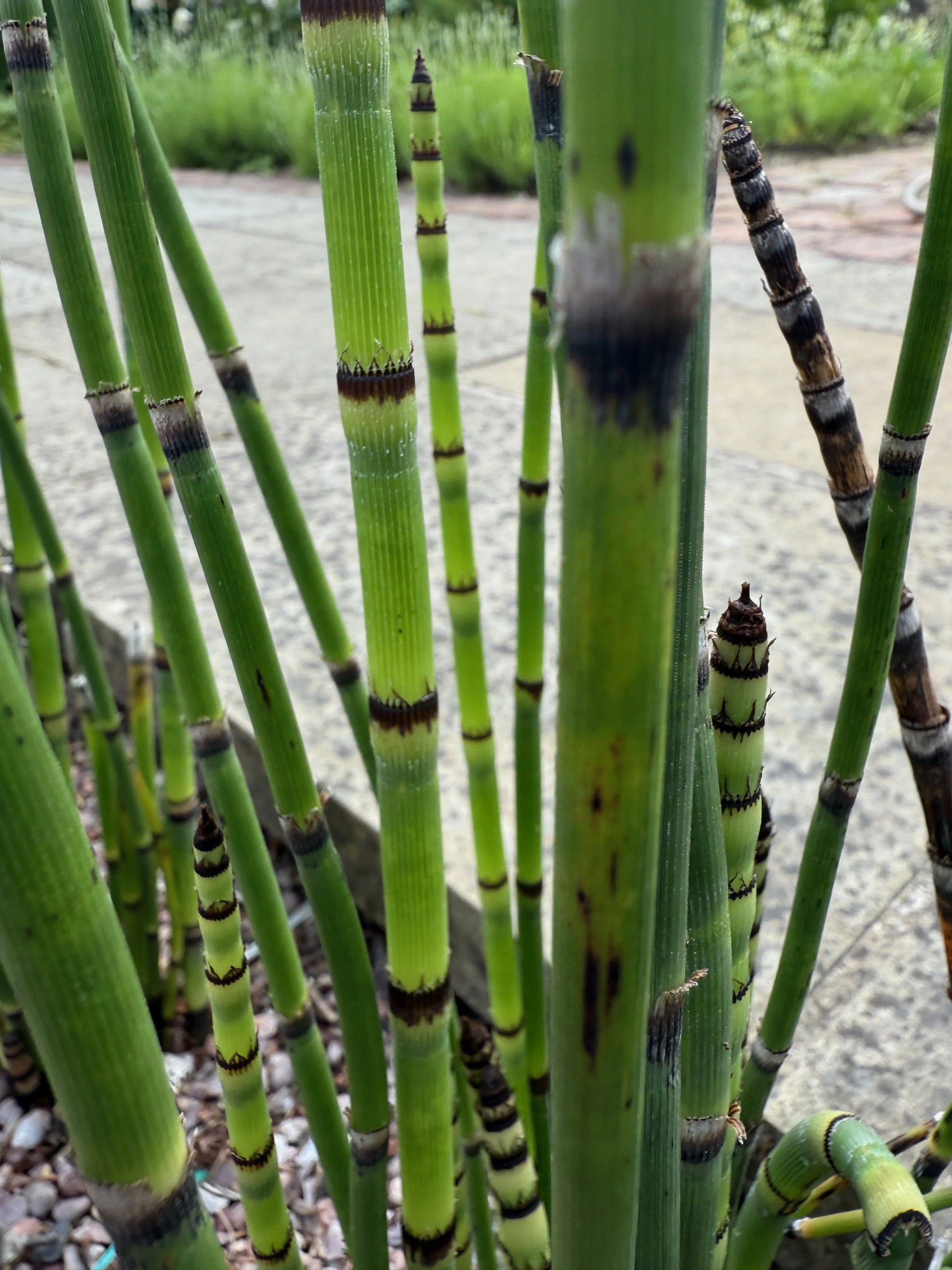Thoughts on Cretaceous gardens…
Fossilised plant remains allow paleobotanists to know what plants were alive during different epochs of earth’s history. Almost always though it is difficult to assign which plants formed ecological communities together at the same time due to the limitations of the accurate dating of these fossilised remains. Gardens designed with an eye towards deep time therefore are often interpretations of what ecological plant communities would have looked like.
There is however one source of fossil that does allow Mesozoic landscapes to be understood. These fossils are called cololites. Cololites, for those who don’t know, are the fossilised gut contents of prehistoric animals and show, without question, the plants that were living together in an area at the same time - the time when the animal died.
Two interesting scientific papers have been released over the last few years that show what was present within cololites of two Cretaceous era dinosaurs, and these are therefore of great interest if you are trying to reconstruct a Cretaceous landscape.
A discovery in Australia of a sauropod dinosaur (think a relative of brontosaurus or diplodocus) named Diamantinasaurus matildae was published in 2025 (https://doi.org/10.1016/j.cub.2025.04.053). It has been generally interpreted as a mid- to high-level browser in the canopy of its native landscape and its gut contents showed a variety of plants made up its diet. Its environment consisted of sequoias (Austrosequoia wintonensis), horsetails (Equisitities - of which the genus Equisetum is the only remaining branch of a more varied family around 100 million years ago), ferns (such as Sphenopteris), monkey puzzle trees (the leaves, cones, and some wood of Araucaria mesozoica), cycad-like plant material (known collectively as bennettitaleans, of which only Otozomities bengalensis is specifically identifiable), and leaves of a maidenhair tree (of the variety Ginkgo wintonensis).
In another paper published in 2020 (http://dx.doi.org/10.1098/rsos.200305) the gut contents of an armoured dinosaur, Borealopelta markmitchelli, of the Nodosauridae family was published - think here of of a squat, well armoured ankylosaur, but without the club on the end of its tail. A low level browser this time, that was found in modern day Alberta in the USA, and was fossilised in the early Cretaceous period. This dinosaur was a browser, much more discerning in the vegetative material it selected, with 85% of its gut contents leaf based (also 7% was stem or twig based, and less than 1% made up of conifer needles). As the ankylosaur made a bigger effort in chewing its food though identifying plant material is more difficult (the sauropod above, by contrast, grabbed what it could and let the stomach do the processing). Cycad-like leaf fragments, and fern leaves (mostly of the Polypodiidae subclass, including Osmundaceae) therefore predominate at ground level when assessing an ankylosaur diet (as it wasn’t until the very end of the Cretaceous that grasses began to evolve). Other plants identified from traces within, or close to, the cololite such as spores (and therefore not necessarily directly ingested) also included mosses, liverworts, and clubmosses in the dinosaurs immediate environment - as well as 12 different conifers, a cycad-like gymnosperm, and two angiosperm trees.
Long lost landscapes are a fascinating subject but studying them through cololites is a way of assessing elements of an actual ecosystem from the depths of the past. Accurately re-creating such landscapes is not possible as 100 million + years of evolution means the plants are no longer extant, but as can be seen it is certainly possible to create a close representation using the descendants of those plants, or those that look visually similar. Ferns, cycads, horsetails, mosses, liverworts, and venerable choices of trees allow a Cretaceous feel even in the British countryside of the twenty first century!



